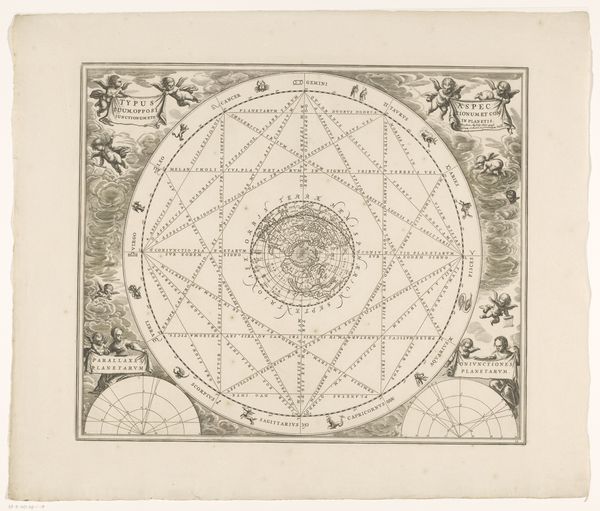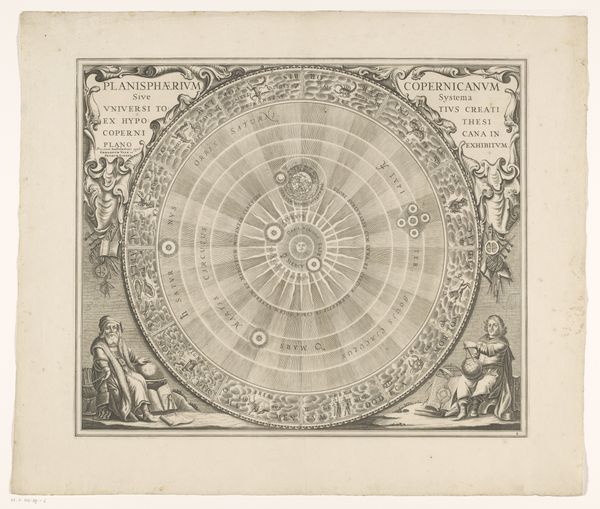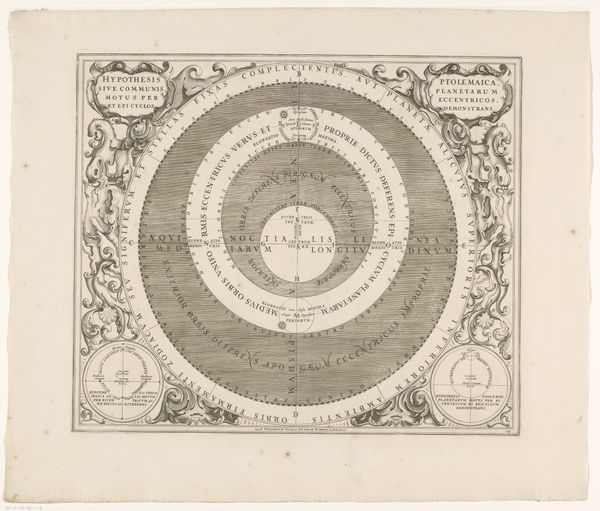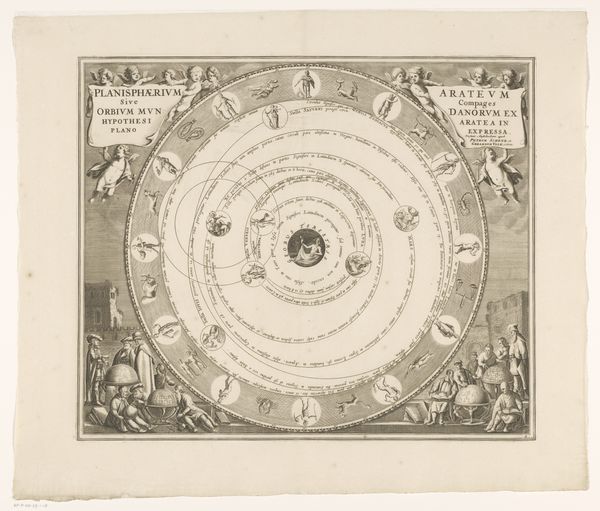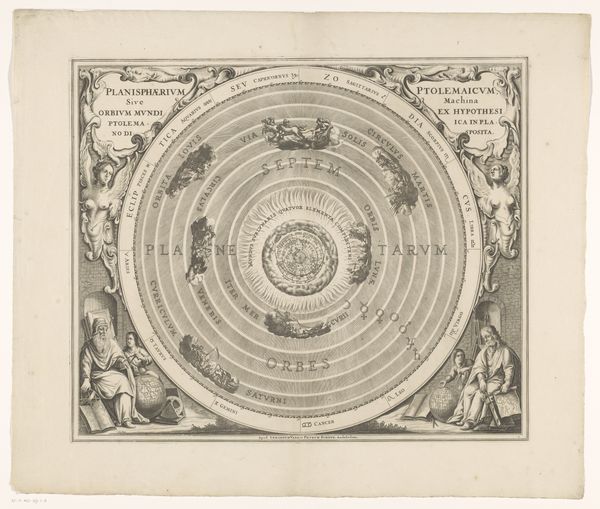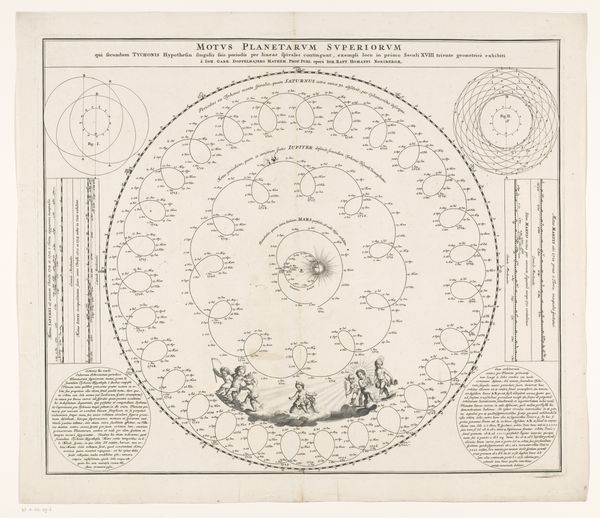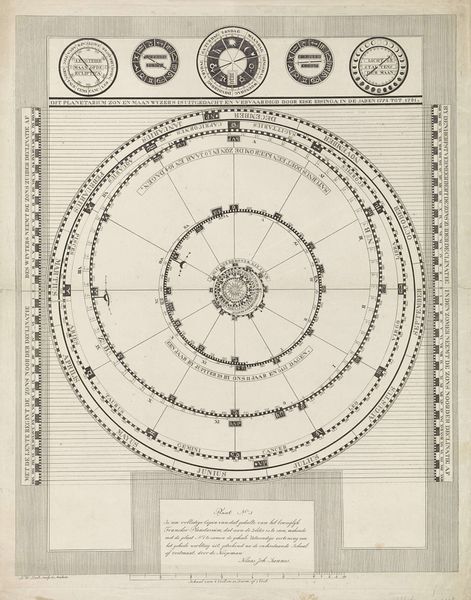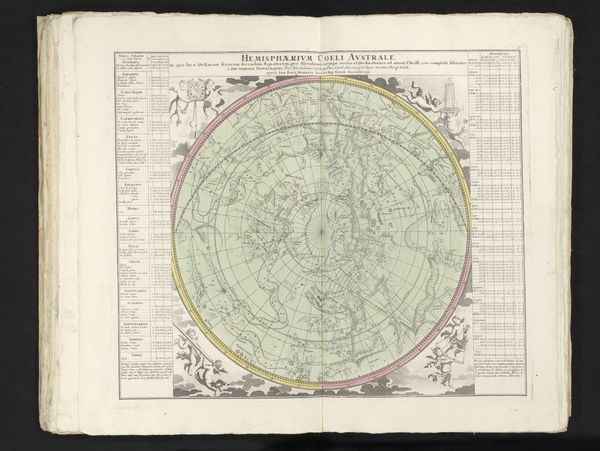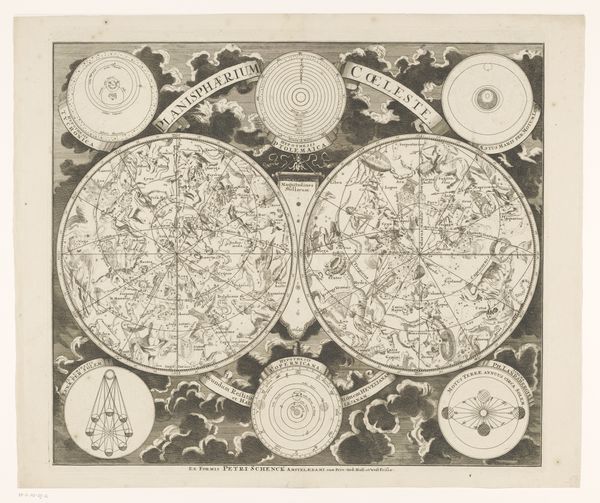
Hemelkaart van de baan van de maan rond de aarde, volgens Ptolemaeus 1660 - 1708
0:00
0:00
print, paper, ink, engraving
#
pen drawing
#
ink paper printed
# print
#
paper
#
ink
#
linocut print
#
geometric
#
islamic-art
#
history-painting
#
academic-art
#
engraving
Dimensions: height 434 mm, width 515 mm
Copyright: Rijks Museum: Open Domain
Editor: So this is "Hemelkaart van de baan van de maan rond de aarde, volgens Ptolemaeus" by Johannes van Loon, made sometime between 1660 and 1708. It’s an engraving, and what strikes me is the intricate detail and the almost dreamlike quality of this scientific diagram. What do you see in this piece that goes beyond the literal depiction? Curator: Beyond the ostensible subject matter, this engraving reveals a fascinating intersection of power, knowledge, and representation. It is an articulation of Ptolemaic cosmology – a worldview deeply entwined with the sociopolitical structures of its time. Notice how the image places the Earth at the center. What does that positioning tell us about the values and beliefs of the period? Editor: That it was a very human-centric way of seeing the universe? Curator: Precisely! But let's consider the broader context. This was produced during a time of great social and religious upheaval, yet it upholds a geocentric model that reinforces a hierarchical view of the universe and, by extension, society. Who benefits from maintaining that worldview? Editor: The Church, mostly, and any power structure resistant to change? It seems almost like this celestial map becomes a tool for solidifying existing authority. Curator: Exactly. And consider the artistic choices. The inclusion of cherubic figures, the decorative borders—how do those elements shape our understanding of the work? Are they purely ornamental, or do they serve to legitimize the depicted cosmology through an appeal to aesthetic and religious sensibilities? How might an Indigenous community interpret it? Editor: I never considered how actively art like this participates in larger social conversations. I thought science was supposed to be objective, but this map has so many layers of interpretation beyond astronomy. Curator: Indeed. And by examining those layers, we gain a deeper understanding not only of the artwork but also of the complex cultural forces that shaped its creation and reception. Now, looking back at it, what stands out to you most? Editor: Now I see it's less about stars and more about the complex relationships of power at play when it was created. Thank you!
Comments
No comments
Be the first to comment and join the conversation on the ultimate creative platform.

